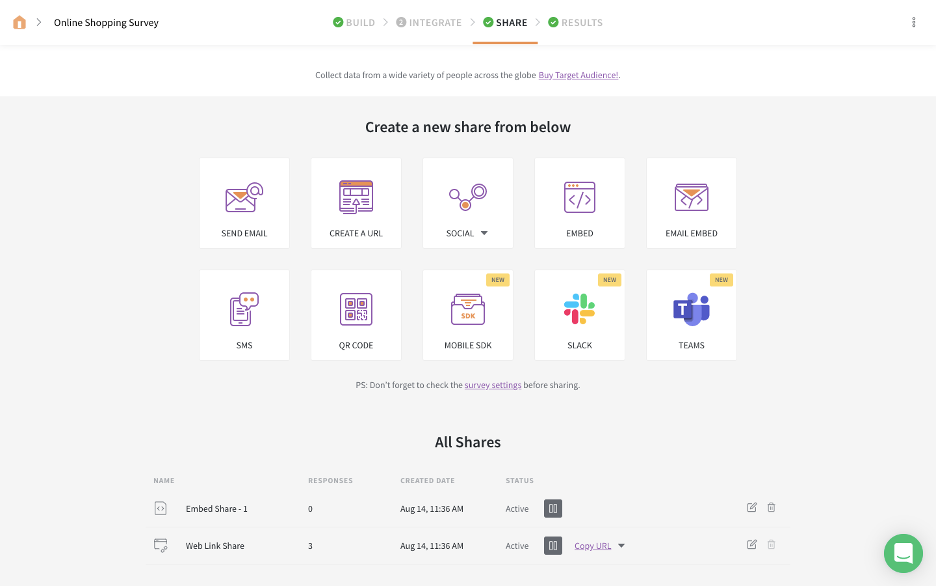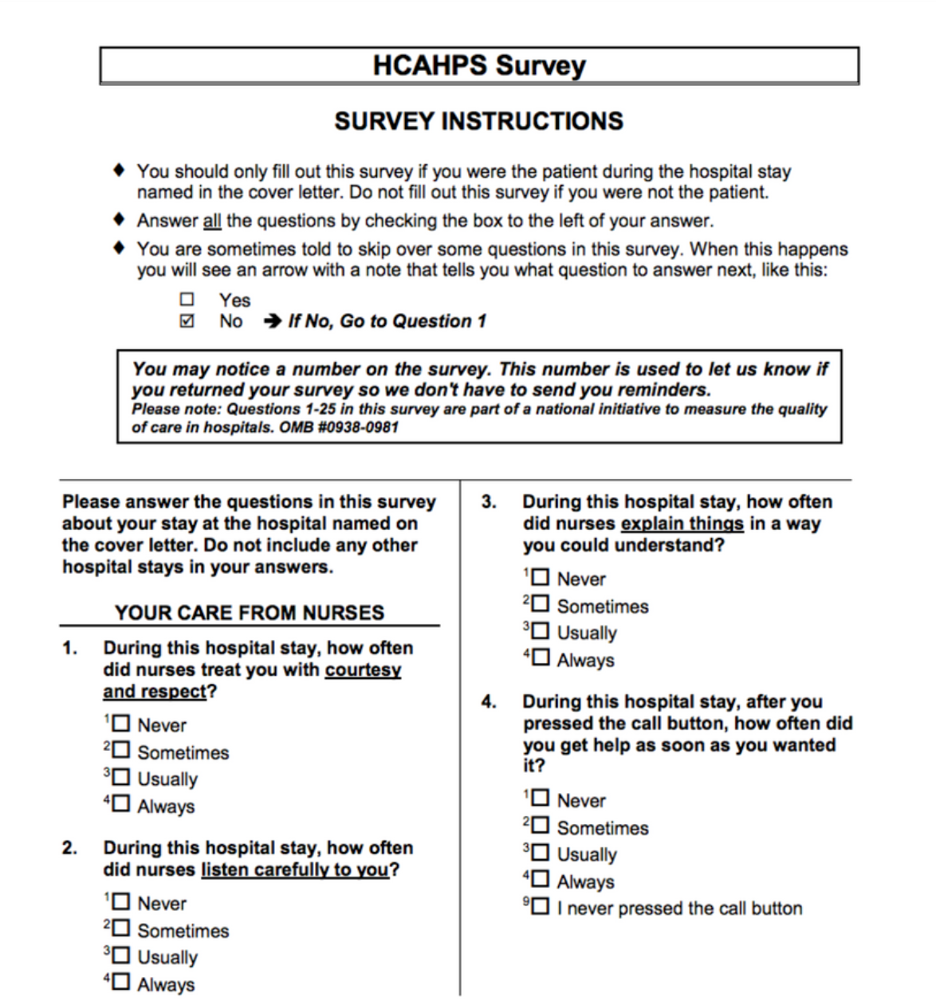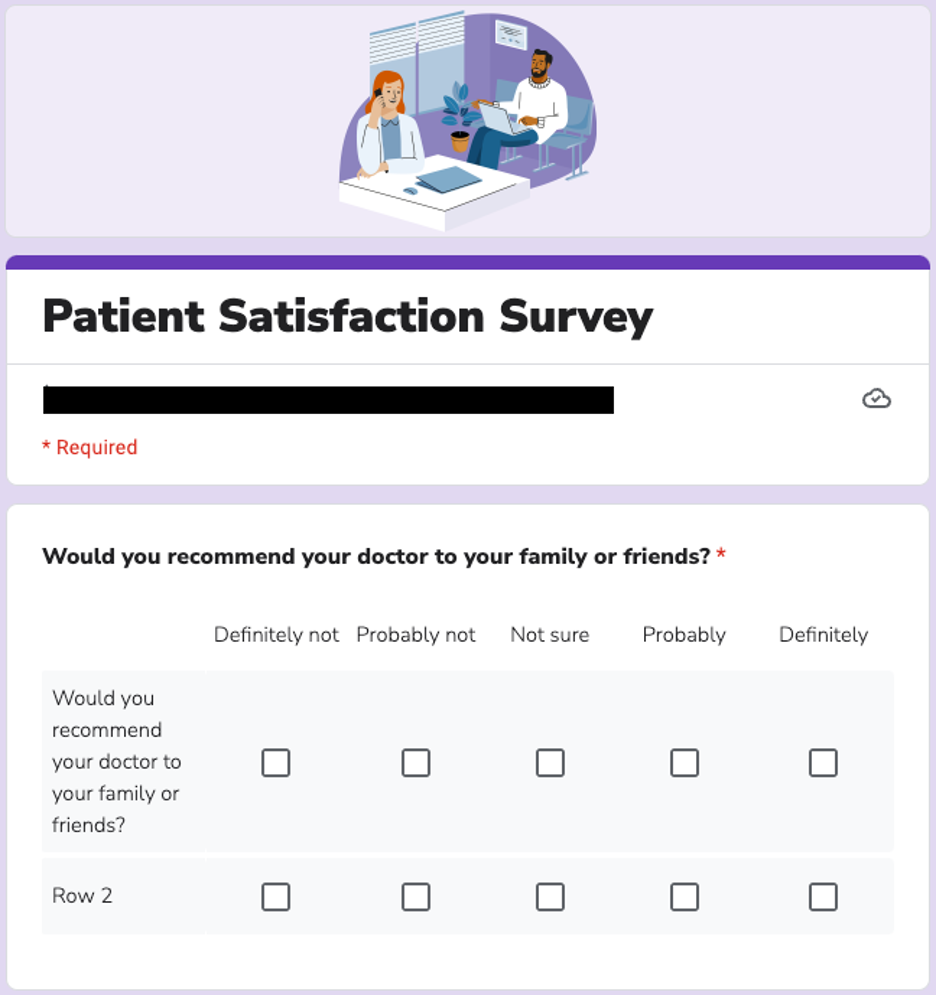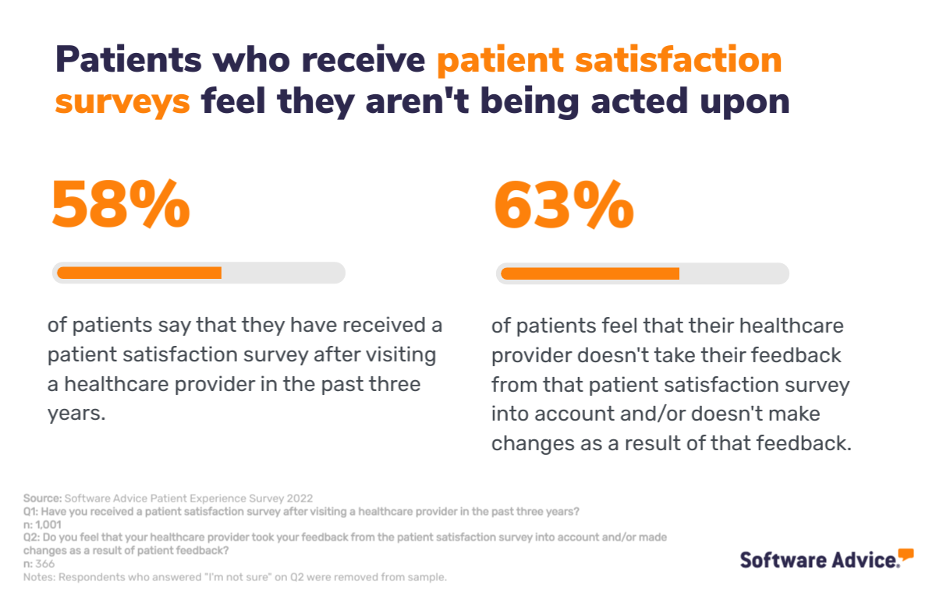Patient Satisfaction Survey Examples To Improve the Patient Experience
If you’re a small practice owner concerned about improving patient satisfaction, you should consider developing and distributing regular patient satisfaction surveys.
Prioritizing the improvement of patient satisfaction alongside patient experience can help your practice continue to grow. If you’ve run into issues with patients leaving your practice when you feel that you’ve been providing an excellent patient experience, you might need to focus more on patient satisfaction in order to address the concerns of patients that might require more attention than others.
In this article, we’ll break down why it’s important to develop and distribute a patient satisfaction survey using survey data collected via the 2022 Software Advice Patient Experience Survey*. We’ll also provide you with a downloadable patient satisfaction survey that was reviewed by Ohio-based Psychiatrist Dr. Jess Levy [1] to help get you started.
What is a patient satisfaction survey?
Patient satisfaction is a facet of patient experience that is largely subjective because it relies on a patient’s perception of the services they received, which makes it difficult for healthcare organizations to measure.
Because patient satisfaction is not a directly measurable, observable thing, patient satisfaction surveys are developed and distributed to measure patient perception. Ideally, patient satisfaction surveys can help healthcare organizations translate subjective perception into meaningful, quantifiable, and actionable data that can be used to help improve the overall patient experience and help retain patients longer.
Surveys can be conducted anonymously either while your patients are physically on your premises, or digitally by using free survey tools or more specialized, feature-rich survey software tools.

An example of SurveySparrow’s survey creation tool (Source)
Benefits of conducting patient satisfaction surveys
According to the 2022 Software Advice Patient Experience Survey*, most patients don’t feel a sense of loyalty to their doctors. In fact, a majority of patients have sought a new provider after just one negative experience.

Healthcare organizations and providers need to prioritize patient engagement, experience, and satisfaction from the very beginning to ensure that your patient-provider relationship improves and withstands the test of time.
Luckily, improved patient satisfaction comes with a variety of benefits:
Patient loyalty and retention: Satisfied patients are usually loyal patients. If your patient is engaged and happy with the service they receive, they’re more likely to complete all necessary check-ups, follow-ups, and any other appointments that are required of them. And they’re more likely to attend. Not to mention that satisfied patients are great for word of mouth since they are more likely to recommend your healthcare organization to friends and family.
Increased profitability: Ultimately, satisfied patients help improve your practice’s profitability because patients who show up to their appointments means more revenue and less wasted time. Additionally, they are more likely to leave positive reviews which will help your practice gain more new patients.
Better staff morale: Patients that are more engaged and satisfied are less likely to interact in stressful ways with you and your staff. Not only does this improve staff morale, but it also has a cyclical effect in that if your staff is happy, they’re more likely to provide great service which in turn leaves your patients more satisfied with their experience.
Higher productivity: Utilizing patient engagement software or software designed to help with inefficiencies, such as patient scheduling software, can help improve patient satisfaction while also improving your staff’s productivity. Freeing your staff from making time-intensive phone calls to confused patients allows them to focus more time on important tasks that require their attention.
Greater practice reputation: We alluded to it earlier, but satisfied patients are more likely to leave positive reviews. And it turns out that online reviews are incredibly important for patients when they’re searching for a new doctor. If your patients’ satisfaction survey results are positive, you can post them publicly as a way to demonstrate your practice’s commitment to your patients.
Better outcomes for patients: Engaged and satisfied patients are ones that are going to stick to their care plan because they trust you. If they trust you, they’re going to see that the treatment plan you’ve outlined for them will help improve their quality of life and wellness.
Examples of patient satisfaction surveys
The most commonly distributed patient satisfaction survey is the Hospital Consumer Assessment of Healthcare Providers and Systems Survey (HCAHPS). HCAHPS was created by the Centers for Medicare and Medicaid Services (CMS) in partnership with the Agency for Healthcare Research and Quality (AHRQ).
Its purpose is to capture the sentiments of all patients, not just those receiving Medicare or Medicaid about their healthcare experiences. Primarily, it’s distributed to hospitals so that patients can view results to compare them before making their choice.
CMS said that the HCAHPS survey was created to address three goals:
Providing healthcare consumers with objective and meaningful comparisons of hospitals.
Publishing HCAHPS results to incentivize hospitals to care about patient satisfaction.
Increasing transparency of care quality by promoting accountability in exchange for the public’s investment [2].

The first page of the HCAHPS Survey [3]
If you are a small healthcare practice and want to rely solely on the HCAHPS survey to improve patient satisfaction, it’s important to know that it’s designed for hospitals and isn’t specific to any particular healthcare organization. So while you can use this survey, you might not receive the most helpful data for your particular practice. That’s why it’s important to create your own effective patient satisfaction survey or modify an existing survey to help gather data that’s more critical and relevant to your practice.
To help with this, we created a simple, easy-to-use survey template that you can use as is or modify to better suit your practice.

For instance, if you’re a dentist, psychiatrist, or other specialist, you might not need some of the more general questions on the survey. That’s why creating and distributing your own survey is the most beneficial way to get usable and actionable data.
What resources do you need to start running patient satisfaction surveys?
While running patient satisfaction surveys should be a core part of any successful practice’s repertoire, you can’t just send one out without thought. According to our Software Advice 2022 Patient Experience Survey*, 58% of patients say they have received patient satisfaction surveys after visiting a healthcare provider within the past three years. However, 63% of those who say yes to receiving them also say they feel that their healthcare provider doesn’t take their results into account or make any changes as a result of those surveys.

This indicates that even if doctors are sending patient satisfaction surveys out, the patient sentiment and perception hasn’t been improved. This disconnect might occur for a variety of reasons, but you can mitigate the potential for disconnects by having a strong plan in place when developing and running your survey.
While you can distribute surveys and compile data using free services, you might find that it doesn’t give you the rich data that you feel like you need in order to improve your patient experience. If this is the case, you might want to consider more robust survey software tools.
Survey tools allow you to create and distribute secure surveys while also delivering real-time results so that you can determine the effectiveness of your surveys and make changes quickly. Additionally, many of these software tools allow you to dissect the information in more ways than free tools can. For example, you might be able to split your respondents into more useful categories such as age/demographic/job type/location that more budget-friendly options might not include.

An example of survey software data visualization (Source)
First, you should designate one member of your team to be responsible for distributing and compiling the survey data. Whether that’s a nurse, a doctor, or someone in administration, it should be one of their primary responsibilities, and they should be given adequate time to accomplish the task.
Next, determine what cadence you want to distribute the survey to your patients. Ideally, you will survey all of your patients regularly, even if that’s once every visit because patient perception can change. We suggest looking at the compiled survey data at least once a quarter with a team of important decision-makers such as your partners, nurses, and administrators in order to determine next best steps given what the data says.
Most importantly, it’s crucial to have intent behind every survey you send out. In order to make meaningful changes, you need to take running the survey seriously and not just do it because you think it’s what you should be doing.
Patient satisfaction is a crucial part of your practice and should not be overlooked
Patient satisfaction is about making sure that patients who visit you feel like their needs were met. Even if you have given your patients’ the best possible experience, if a patient feels they weren’t listened to, it’s all meaningless. Happy patients mean more referrals, better reviews, better staff morale, and a better overall reputation.
All of those things lead to more revenue for your practice.
For more resources on patient engagement and patient experience, check out:
And to help you find areas in your practice that you can improve upon to continue to better your patients’ satisfaction with your services, download and use our patient satisfaction survey template included below now.
Sources
Dr. Jess Levy, About me page
HCAHPS Patients' Perspectives of Care Survey, Centers for Medicare & Medicaid Services
HCAHPS Survey, Federation of American Hospitals
Survey methodology
* Software Advice's 2022 Patient Experience Survey was conducted online in October 2022 among 1,001 respondents in the U.S. Respondents were all adults who had visited a healthcare provider within the past three years.